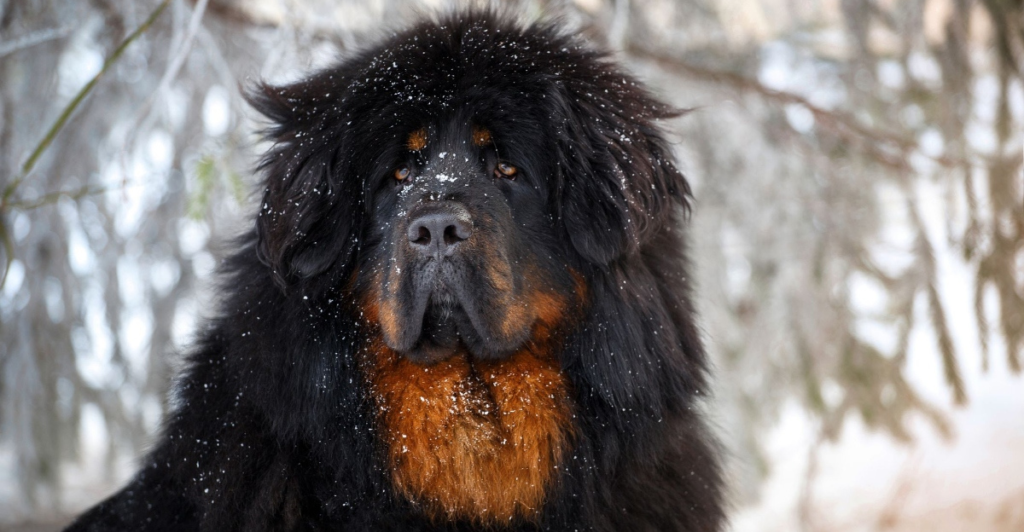
These large dog breeds are often considered intimidating because of their sheer size and strength, and they require special handling and training.
Many are loyal companions, but some breeds are better off with experienced owners, as they can be protective and aggressive by nature. These traits can be managed with adequate socialization, training, and leadership.
Some breeds, however, particularly the extreme end of protective dogs, such as the Caucasian Shepherd Dog and the Fila Brasileiro, can be incredibly challenging for an inexperienced owner. Each breed has its own unique requirements, and understanding what each requires is important for responsible pet ownership.
1. Caucasian Shepherd Dog
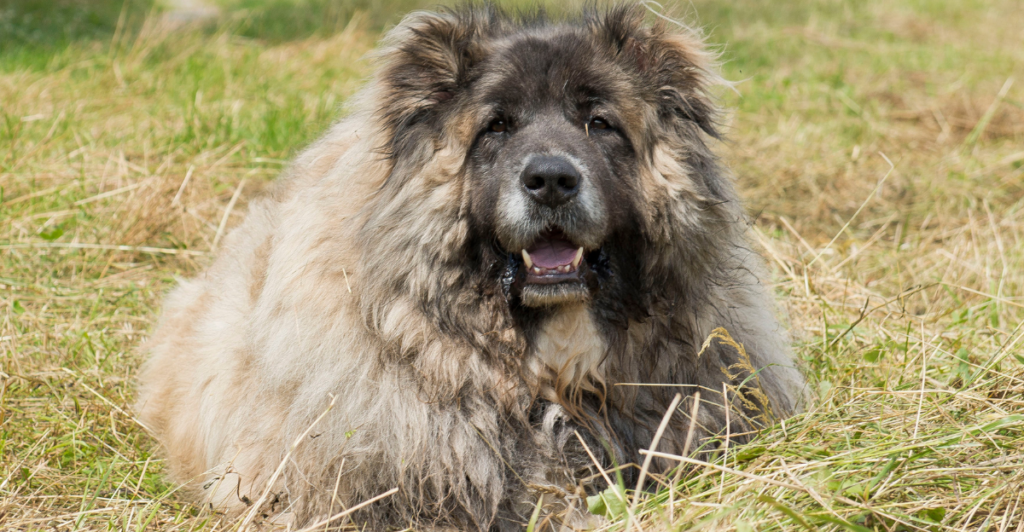
The Caucasian Shepherd Dog is a massive breed that can weigh as much as 200 pounds and possesses very strong protective instincts. Originally bred to guard livestock, it is naturally territorial and wary of outsiders.
They are not suitable for inexperienced owners. Without suitable training and early socialization, they can be overly aggressive. This fearless dog best matches a confident handler who can redirect its protective drive without promoting aggressive behavior. It’s a breed that demands strong leadership and a structured setting for it to thrive.
2. Fila Brasileiro
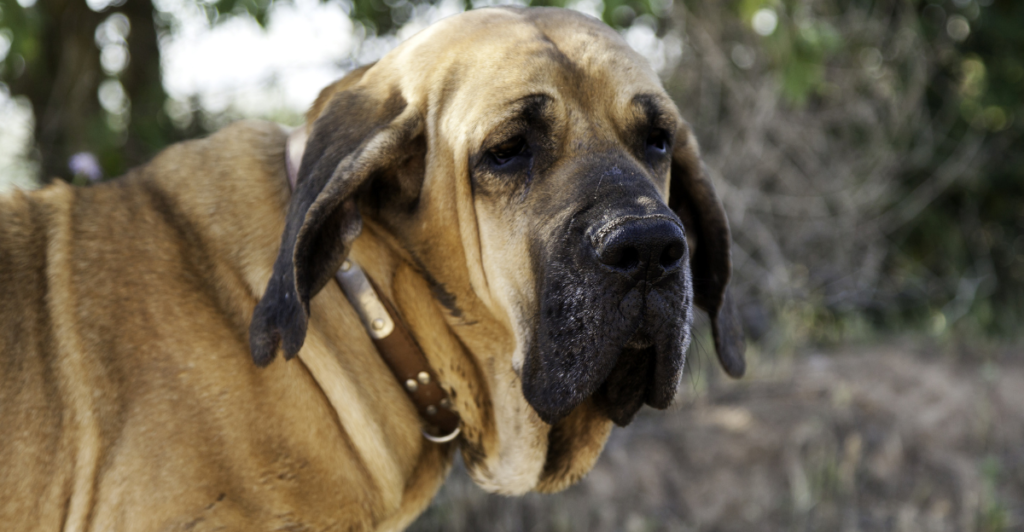
The Fila Brasileiro is a muscular Brazilian mastiff who is extremely loyal and tends to be suspicious of strangers. Originally bred for hunting and guarding, this breed has a strong prey drive and can be difficult for newcomers to approach.
To prevent defensive behavior, they need rigorous training and early socialization. Due to its intimidating nature, some countries have banned this breed altogether, which emphasizes the importance of responsible ownership. To ensure safety, handlers must be experienced and know how to deal with dominant breeds.
3. Tosa Inu
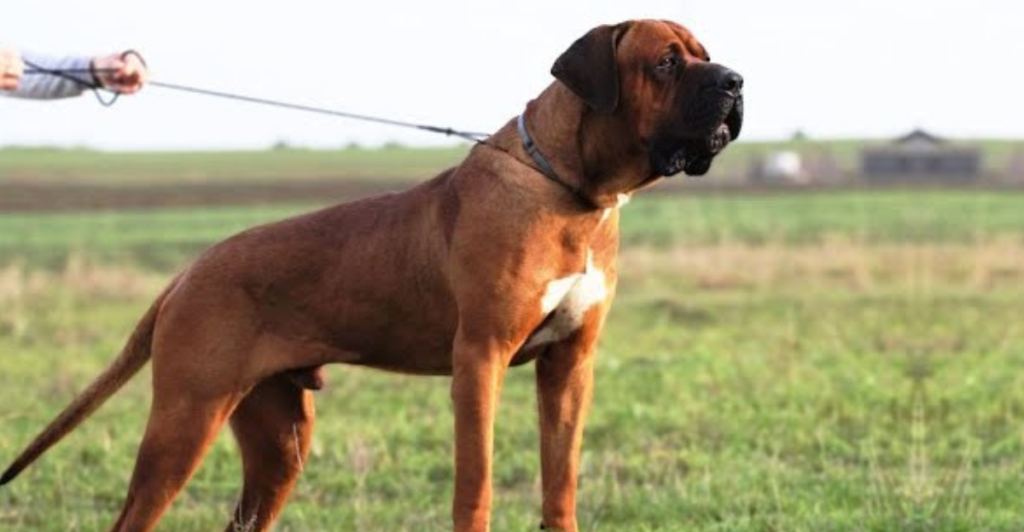
The Tosa Inu, originally bred for dogfighting in Japan, is a rare and powerful breed that can weigh as much as 200 pounds. They can be calm and loyal to their families, but their lineage as fighters demands rigorous training to keep them well-behaved.
Because of their natural predator instincts, firm leadership and early socialization is important to prevent aggressive behaviors, especially in unfamiliar situations. Structured training is important for this breed to distinguish between threats and non-threats, minimizing the risk of aggression
4. The Boerboel
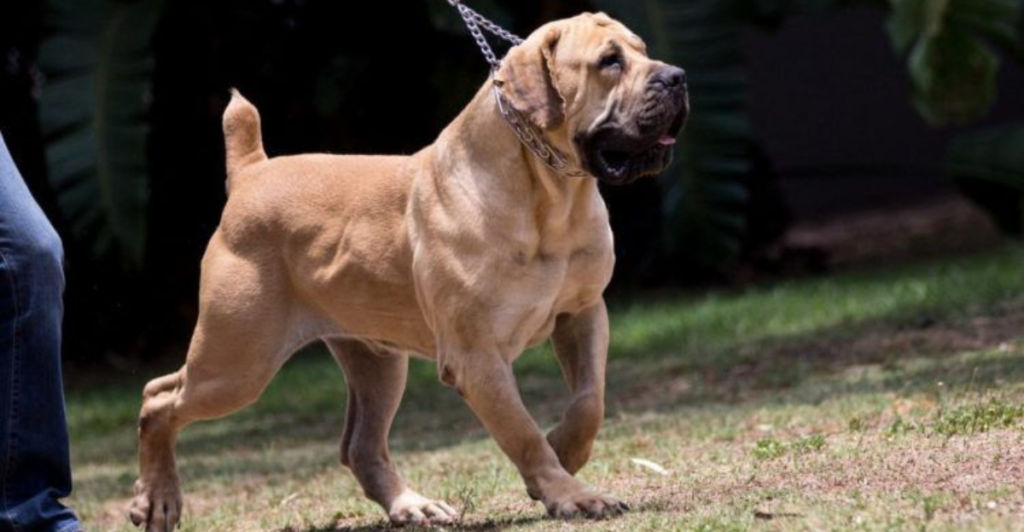
The Boerboel is a South African breed bred to protect homes and farms. It is known for its protective posture, which is complemented by a strong territorial instinct.
Males can weigh in at 200 pounds, and they need lots of training and socialization to remain balanced. Their dominant personality can become overwhelming without consistent training, and they require structured discipline and an owner who understands canine behavior.
Boerboels form deep bonds with their families but are not particularly tolerant of strangers, making them a lifelong commitment for experienced owners.
5. Cane Corso
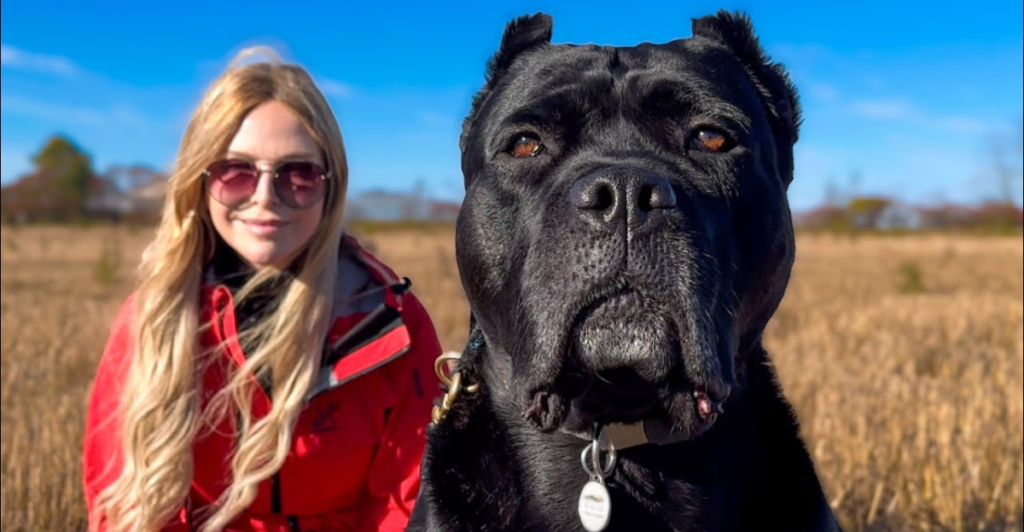
The Cane Corso is an Italian mastiff known for its muscular build and unwavering loyalty. Used as guard dogs, they require firm, consistent training and early socialization to prevent aggressive tendencies.
Cane Corso can be dangerous if poorly trained, which means that owners need to know how to set boundaries. They could become dangerous if they feel threatened, making them suitable only for experienced owners. While with sufficient training, they are affectionate and loyal, without it, they can turn into a serious challenge.
6. Presa Canario
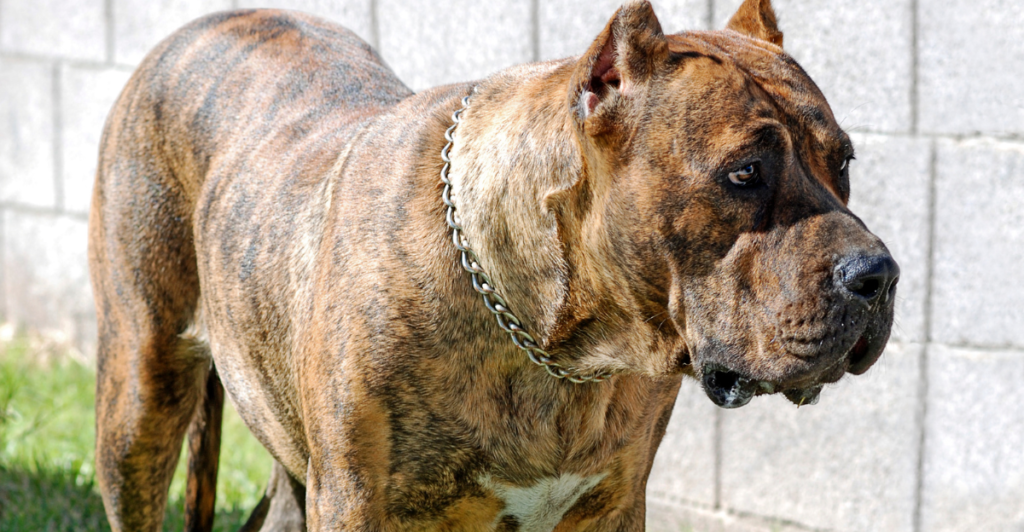
The Presa Canario is a strong breed with a dominant personality, historically bred for herding and guarding livestock. If not properly socialized, their territorial behavior can also make them aggressive.
They are highly energetic breeds. They need to be trained and socialized early to avoid becoming uncontrollable, making them unsuitable for novice owners. The strong-willed nature of females and males alike must be managed by a firm but fair handler.
7. Neapolitan Mastiff
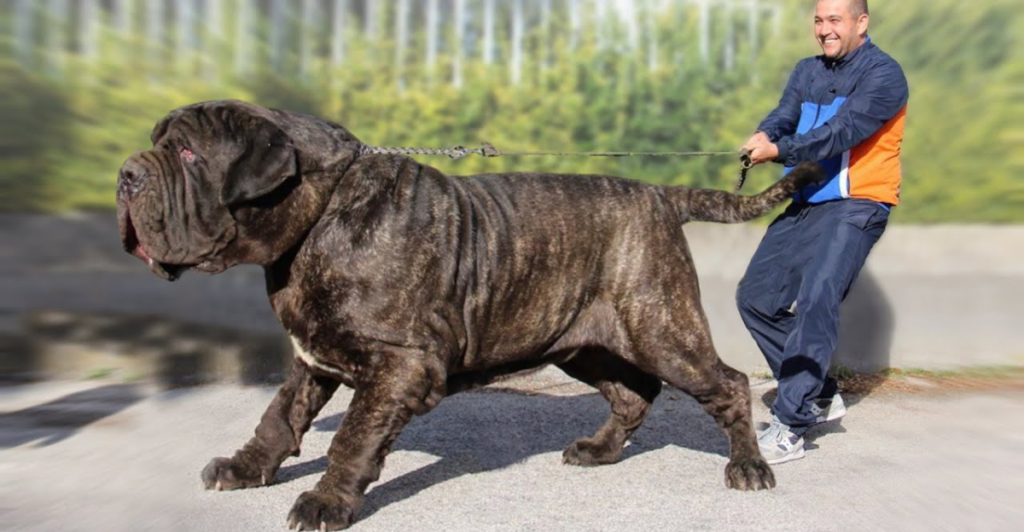
The Neapolitan Mastiff is a massive breed that can weigh up to 150 pounds. It is known for its intimidating presence despite being a gentle giant. To manage their size and strength effectively, they require proper training from an early age.
While affectionate with their families, they are suspicious of strangers, necessitating early training and consistent leadership to prevent aggression. Their health issues due to their heavy build also require regular veterinary care.
8. Komondor
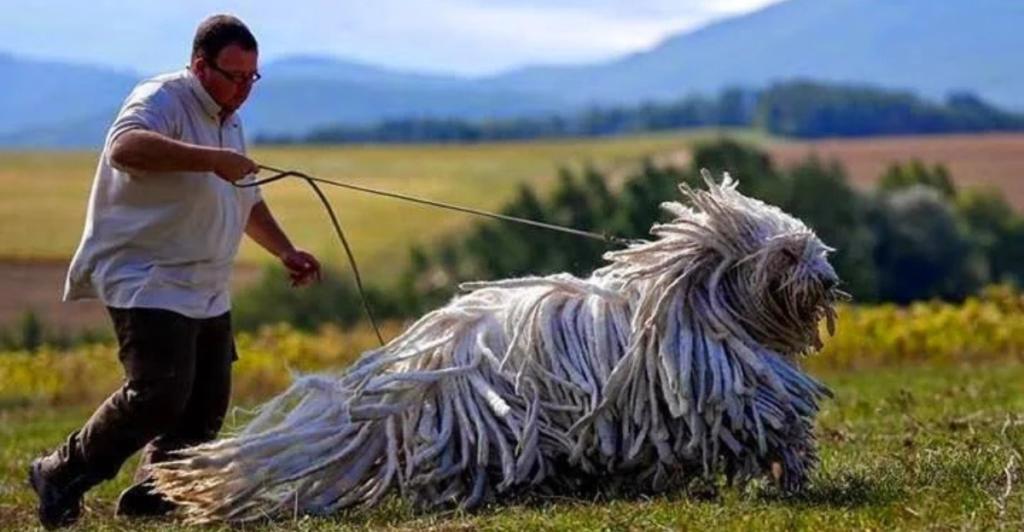
The Komondor, also known as the “mop dog,” was bred to herd and guard livestock and is extremely independent with a strong protective instinct. Affectionate with those they trust, they are naturally suspicious of strangers and can be aggressive if not socialized properly.
They need extensive grooming for their unique coat, making them a challenge for first-time owners. They will need firm leadership skills and consistent training are essential to manage their territorial nature and prevent aggression.
9. Tibetan Mastiff
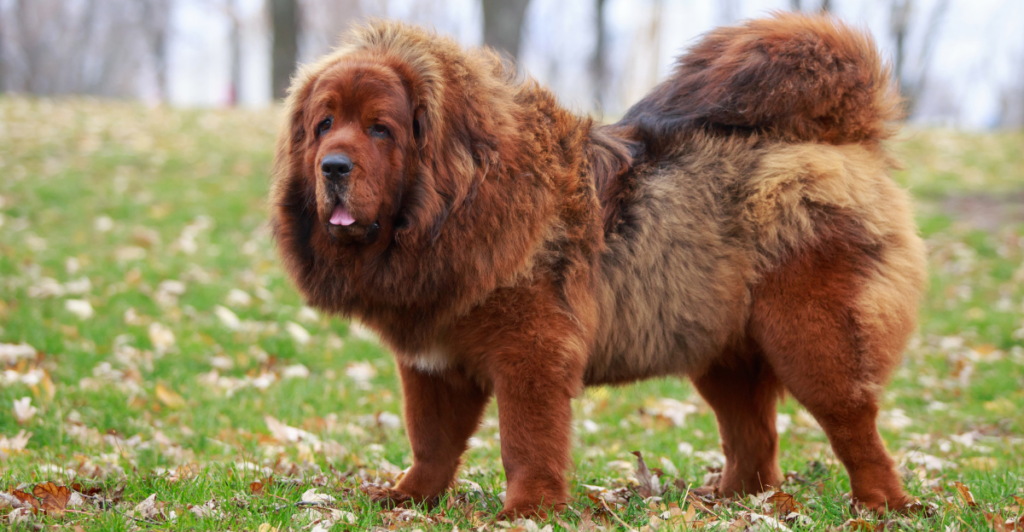
The Tibetan Mastiff is an enormous breed with strong territorial traits. They were bred to guard livestock in the Himalayas. These dogs are also very strong-willed, and some owners may find them difficult to control; this requires an experienced owner who can provide strong leadership and a rigorous obedience education.
Their nocturnal guarding instinct makes them vocal at night, adding to their challenging nature for novice owners. This breed demands an owner with extensive experience in managing large, powerful dogs.
10. Dogo Argentino
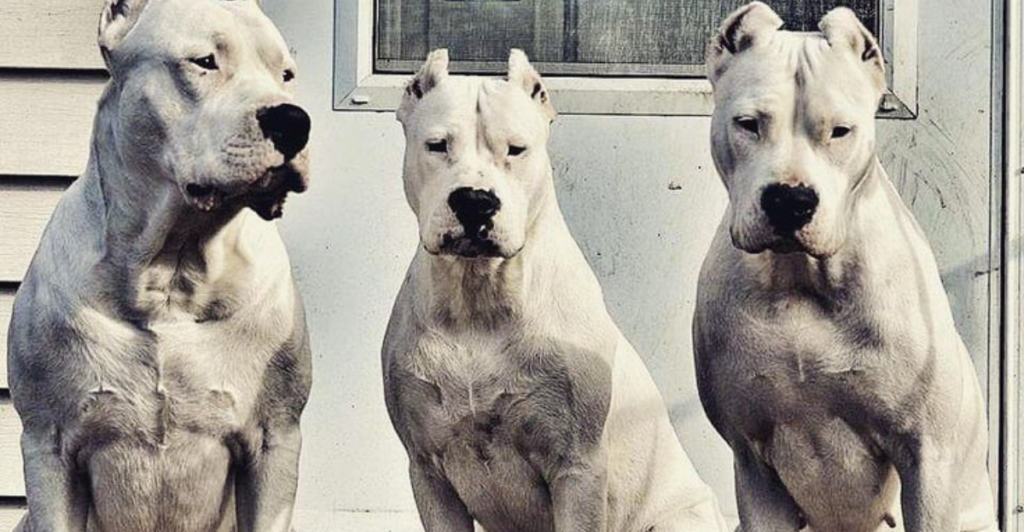
The Dogo Argentino is a muscular, athletic breed originally bred in Argentina for big game hunting. This breed is known for its strength and endurance, but it also has an extremely high prey drive, making it a risk for households with smaller pets.
If not trained properly, their natural instincts to hunt can result in aggressive behavior. Dogos requires rigorous socialization from an early age and thrive under structured training with an assertive owner who can establish boundaries.
The energetic and protective nature of the breed demands lots of exercise and mental energy to maintain a happy dog and prevent destructive behavior. With responsible training, the Dogo Argentino can be a devoted family companion but is not suitable for inexperienced owners.
Explore more of our trending stories and hit Follow to keep them coming to your feed!

Don’t miss out on more stories like this! Hit the Follow button at the top of this article to stay updated with the latest news. Share your thoughts in the comments—we’d love to hear from you!







